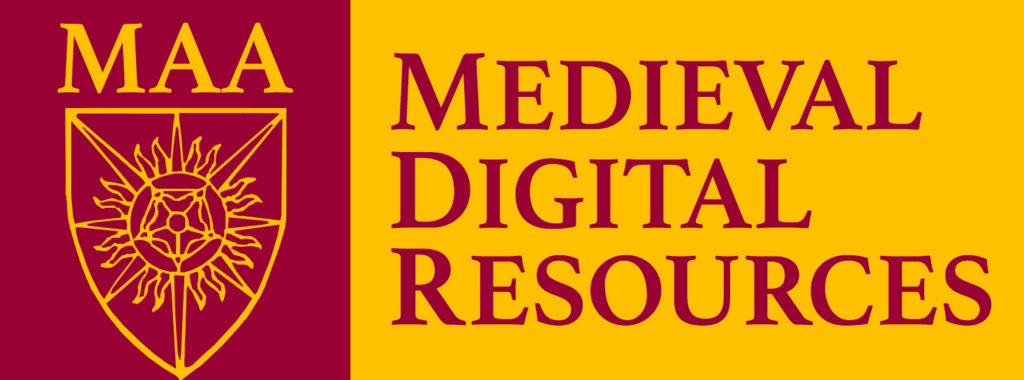Medieval Maps and Mapping Resources
Project Managers:
Dr. Helen Davies | Chris Rouse | Dr. Tobias Hrynick | Dr. John Wyatt Greenlee
Contents
About | Key Readings | Cartographic and Spatial Theory | Medieval Maps Overview | Assorted Studies | Holy Land | Monsters | Portolan Charts | Islamic Cartography | Chinese Cartography | Digital Humanities | Specific Maps | Credits
About
This page is in response to recent requests for reading lists related to medieval maps and mapping. The four primary contributors each work with medieval and/or early modern maps, and this list represents a combination of resources we have found valuable. It is by no means exhaustive, and reflects our own particular interests and projects. Other contributors have added to this list (see below for credits), and we welcome further suggestions and contributions.
At the top of this page we’ve included a list of some key readings covering many major areas of scholarship. Below that are links to longer lists, roughly categorized by theme, that expand greatly on the key readings.
If we’ve missed your favorite text you can suggest additions here.
You can download a PDF of the full list here.
Key Readings
Campbell, Tony. “Portolan Charts from the Late Thirteenth Century to 1500.” In The History of Cartography. Volume 1, edited by J.B. Harley & David Woodward. University of Chicago Press, 1987, pp. 371-463. (link)
De Weerdt, Hilde. “Maps and Memory: Readings of Cartography in Twelfth- and Thirteenth-Century Song China.” Imago Mundi 61, no. 2 (2009): 145–6. (link)
Edson, Evelyn. Mapping Time and Space: How Medieval Mapmakers Viewed Their World. London: The British Library, 1997.
Kline, Naomi Reed. Maps of Medieval Thought: The Hereford Paradigm. Rochester, NY: Boydell Press, 2001.
Friedman, John Block. The Monstrous Races in Medieval Art and Thought. Syracuse, New York: Syracuse University Press, 2000.
Harley, J.B. The New Nature of Maps: Essays in the History of Cartography. Baltimore: The John Hopkins University Press, 2001.
Harvey, P.D.A. Medieval Maps. London: The British Library, 1991. Much of this text has been lately reproduced for free on the British Library’s website (link)
———. Medieval Maps of the Holy Land. London: The British Library, 2012.
Millea, N. and Howell, D., 2018. “Revealing the past: how science is unlocking cartographic secrets.” In Dissemination of Cartographic Knowledge, edited by Mirela Altić. Cham: Springer International, 331-346.
Mittman, Asa Simon. Maps and Monsters in Medieval England. New York: Routledge, 2006.
———. “Gates, Hats, and Naked Jews: Sorting out the Nubian Guards on the Ebstorf Map.” FKW // Zeitschrift Für Geschlechterforschung Und Visuelle Kultur 54 (2013): 88–101.
Morse, Victoria. “The Role of Maps in Late Medieval Society: Twelfth to Fourteenth Century.” In Cartography in the European Renaissance: Part 1, edited by David Woodward, 3:25–52. History of Cartography. Chicago and London: University of Chicago Press, 2007. (link)
Pinto, Karen. Medieval Islamic Maps: An Exploration. Chicago: University of Chicago Press, 2016.
Scafi, Alessandro. Mapping Paradise: A History of Heaven on Earth. London: The British Library, 2006.
Woodward, David. “Medieval Mappaemundi.” In Cartography in Prehistoric, Ancient and Medieval Europe and the Mediterranean, edited by J. B. Harley and David Woodward, 1:286–370. History of Cartography. Chicago and London: University of Chicago Press, 1987. (link)
———. “Cartography and the Renaissance: Continuity and Change.” In Cartography in the European Renaissance: Part 1, edited by David Woodward, 3:1–24. History of Cartography. Chicago and London: University of Chicago Press, 2007. (link)
Westrem, Scott D. “Making a Mappamundi: The Hereford Map.” Terrae Incognitae 34, no. 1 (2002): 19–33.
Expanded Reading Lists by Category
> Cartographic and Spatial Studies: Theories, Methods, and Practice
A collection of readings to help situate readers in some of the theories and methods at play in the critical study of maps and space.
An introduction to medieval maps and mapping, these readings will give a broad overview of different sorts of medieval maps and help to situate medieval European cartographic traditions.
A catch-all category that includes (among other things): studies of specific mapping features, connections between travel literature and mapping, and reflections of classical antiquity in medieval geographies.
The Holy Land was central to many medieval European conceptions of global geography, and in post-Crusades maps it frequently sits as the middle of the world. These works examine the mapped space of the Levant.
Mappaemundi were frequently marked by the monsters and threatening peoples that mapmakers set at the edges of the world. This collection addresses monsters, monstrous races, and the mapped Other.
Not all medieval maps were focused on theology or myth at the expense of geography. Portolan charts mapped shorelines and provided useable maps for navigation. This collection offers both key readings for medieval portolan charts and links to more expansive bibliographies.
> Medieval Islamic Cartography
Medieval Europeans were not the only peoples to make maps, and this collection introduces readers to Islamic mapmaking.
> Medieval Chinese Cartography
Europe sat at the far edge of a connected medieval globe, and did not have a monopoly on its representation. Chinese mapmakers, on the other side of the world, had their own cartographic traditions, as this collection shows.
> Medieval Maps and Digital Humanities
Recent advances in digital tools and approaches have opened up new pathways for studying medieval manuscripts of all kinds, including maps. This collection touches on some of the new sets of methods and practices that Digital Humanities offers.
This collection includes readings for: The Hereford Mappamundi; The Ebstorf Mappamundi; The Psalter Mappamundi; The Vercelli Map; Matthew Paris’s maps; Frau Mauro Mappamundi; and others.
Credits and Thanks
Sections of the project have been generously provided by field experts. We are thankful to the following contributors:
Tony Campbell — Portolan Charts
Yossef Rapoport — Medieval Islamic Maps
Nick Millea and the Gough Map Research Group — The Gough map
If you would like to contribute to the project, or have suggestions for additions, you can contact us here.
This project is listed with the Medieval Academy of America’s Medieval Digital Resources Database.

